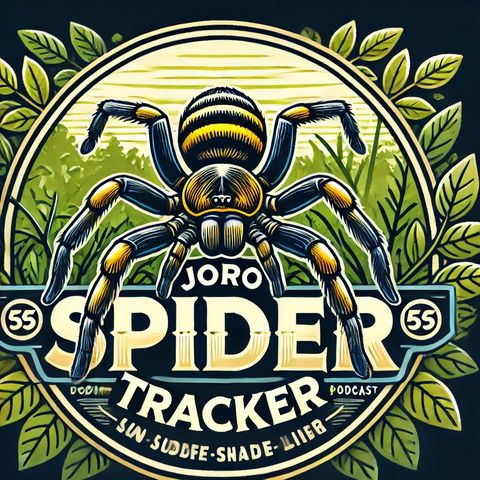
Contacts
Info
Joro Spider Tracker: Your Guide to the Fascinating World of Joro SpidersWelcome to "Joro Spider Tracker," the podcast dedicated to exploring the intriguing lives of Joro spiders. Join us as...
show more- Species Insights: Learn about the characteristics, life cycle, and unique traits of Joro spiders, including their distinctive yellow and black stripes.
- Habitat Exploration: Discover the natural environments where Joro spiders thrive and how they interact with their ecosystem.
- Tracking and Observation Tips: Gain practical advice on how to safely track and observe Joro spiders in the wild.
- Conservation Efforts: Understand the importance of conserving these spiders and their habitats, and learn how you can contribute to their protection.
Keywords: Joro Spider, Wildlife Tracking, Nature Podcast, Spider Behavior, Arachnology, Habitat Conservation, Spider Observation, Nature Exploration, Biodiversity, Wildlife Conservation
For more info https://www.quietperiodplease.com/

Joro Spider Tracker: Your Guide to the Fascinating World of Joro SpidersWelcome to "Joro Spider Tracker," the podcast dedicated to exploring the intriguing lives of Joro spiders. Join us as...
show more- Species Insights: Learn about the characteristics, life cycle, and unique traits of Joro spiders, including their distinctive yellow and black stripes.
- Habitat Exploration: Discover the natural environments where Joro spiders thrive and how they interact with their ecosystem.
- Tracking and Observation Tips: Gain practical advice on how to safely track and observe Joro spiders in the wild.
- Conservation Efforts: Understand the importance of conserving these spiders and their habitats, and learn how you can contribute to their protection.
Keywords: Joro Spider, Wildlife Tracking, Nature Podcast, Spider Behavior, Arachnology, Habitat Conservation, Spider Observation, Nature Exploration, Biodiversity, Wildlife Conservation
For more info https://www.quietperiodplease.com/
Information
| Author | QP-4 |
| Organization | William Corbin |
| Categories | News |
| Website | - |
| corboo@mac.com |
Copyright 2024 - Spreaker Inc. an iHeartMedia Company
